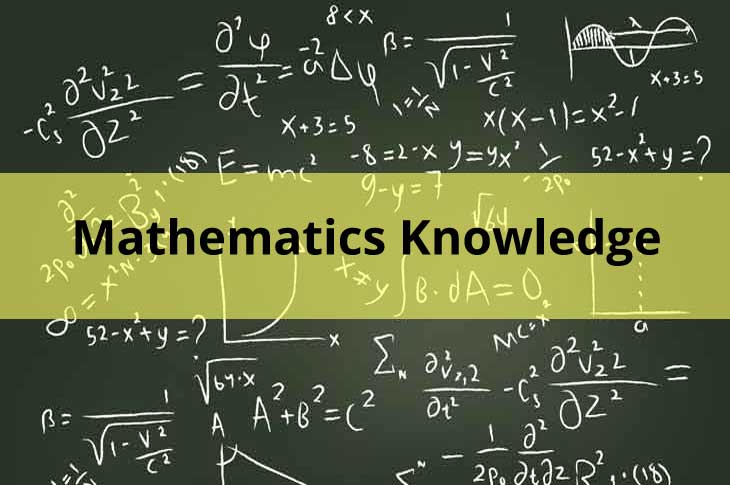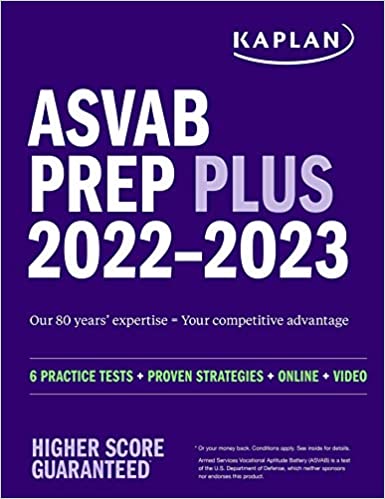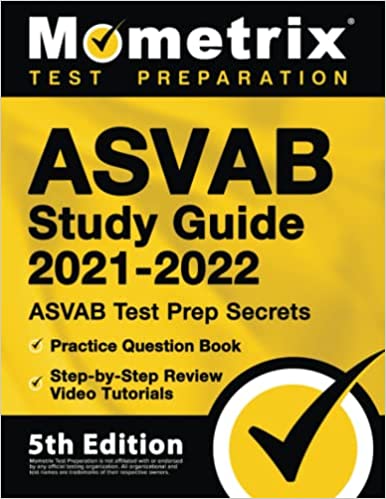
How were you at math in high school? This subtest of the Armed Services Vocational Aptitude Battery is going to put you to the test. It is filled with questions covering basic high school math.
Unfortunately, that means there is a lot for this test to cover, which means you’ll have to do a lot of jumping from one math concept to the next during the course of this subtest. One way to get ready for these rapid switches is to take our practice test – but we’ll talk more about that later. Right now, let’s take a closer look at the Mathematics Knowledge subtest.
The Test
On the Mathematics Knowledge subtest you will have 24 minutes to answer 25 questions on the paper version of the ASVAB. On the CAT-ASVAB you will have 20 minutes to answer 16 questions.
This subtest is counted as part of your Armed Forces Qualification Test score, so you will want to perform as well as you can. A good score on this subtest is also important to qualify for a number of military jobs.
The Questions
The questions on the Mathematics Knowledge subtest cover a variety of mathematical concepts, including fractions, percentages, basic algebra and more. By and large, the questions do not go too in-depth but you will need to have a good working knowledge of how to solve basic math problems to do well on this subtest. Here is some more information about the areas tested for on this exam:
Math Vocabulary
Before taking this subtest you will want to brush up on your math vocabulary. You’ll want to refresh your memory on such terms as integers, factors, prime numbers, composite numbers, base, square root, exponent, reciprocal and others as knowledge of these terms will help you better understand questions and more quickly arrive at answers.
Percentages
You’ll also want to refamiliarize yourself with percentages before the test. You’ll want to go over the proportion method of solving equations and all the parts of percentage equations. You’ll also want to refresh your memory of basic percentages, which basically refer to a number out of 100 (so 40 percent means 40 out of 100).
As for the proportion method of solving percentages, this method is expressed as: percent/100 = part/whole. Here’s how the equation works:
Let’s say you have a question that asks “10 is what percentage of 25?” Using the proportion method you would set this question up as x/100 = 10/25 and then you would just solve for x.
Fractions
Another subject you’ll want to brush up on before the test is fractions. Remember to convert a fraction to a percentage you divide the numerator by the denominator and multiply by 100.
Also, don’t forget that the least common denominator is the least common multiple (LCM) of the denominators in two or more fractions. So the least common denominator for 2/3 and 1/6 is 6.
Now concerning mathematical operations involving fractions:
- Addition – if they have the same denominator, simply add the numerators and copy the common denominator. If they have different denominators, determine the LCD and then add.
- Subtraction – if they have the same denominators, subtract the numerators and copy the common denominator. If they have different denominators, find the LCD and then subtract.
- Multiplication – Multiply the numerators and multiply the denominators and then reduce if possible.
- Division – Turn the second fraction upside down and multiply.
Algebra
Yes, you will need to remember some basic Algebra concepts for this subtest. You’ll want to know how to solve for x and how to find the square root of a number, among other things.
One More Thing Regarding Questions
Logarithms, example – log_2 (16) = 4, are not commonly found on the paper version of the ASVAB but they do show up on the CAT-ASVAB. So if you are planning on taking the computerized version of the test, you should also brush up on your logarithms.
Here are some sample questions for this subtest:
- Solve for x: 5x – 2x = 7x + 2x – 24
- x3(x3) =
- If a circle has a radius of 10 feet, what is its circumference most nearly?
Test-Taking Tips
When answering questions on the Mathematics Knowledge subtest, keep the following in mind:
- Parentheses first – you should always do the work inside parentheses before moving on to the remaining parts of the equation.
- Exponents second – after solving the parentheses move on to the exponents, and remember exponents go with the number they are closest to.
- Multiplication and division third – go from left to right.
- Addition and subtraction fourth – again be sure to go from left to right.
Also keep in mind this is a timed test so if you run into a difficult problem, skip it, and then come back to it if you have time at the end of the test.
Finally, don’t be afraid to guess. If you come to a question you don’t know the answer for, guessing gives you a 25 percent chance of being right while not answering at all gives you a 100 percent chance of being wrong.
Preparing for the Mathematics Knowledge Subtest
As mentioned earlier in this study guide, one of the better ways to prepare for the rapid jumps from math concept to math concept on this subtest is to take our practice test.
This test contains questions on material commonly tested for on the real test. Plus, it will get you prepared for the actual experience of sitting for the ASVAB.
Other things you can do is look over a math textbook or go online to a math site and read over math concepts and practice solving basic math problems.
Because the Mathematics Knowledge subtest is one of the four parts of the ASVAB that determine your AFQT score, you will want to devote more of your study time to this section. If this subtest is also used to determine eligibility for a particular military job that you want, then you would want to devote even more attention to this section.
Recommended ASVAB Study Guides
Using the right ASVAB study guide is essential to ensure the best possible outcome when preparing for the exam.




